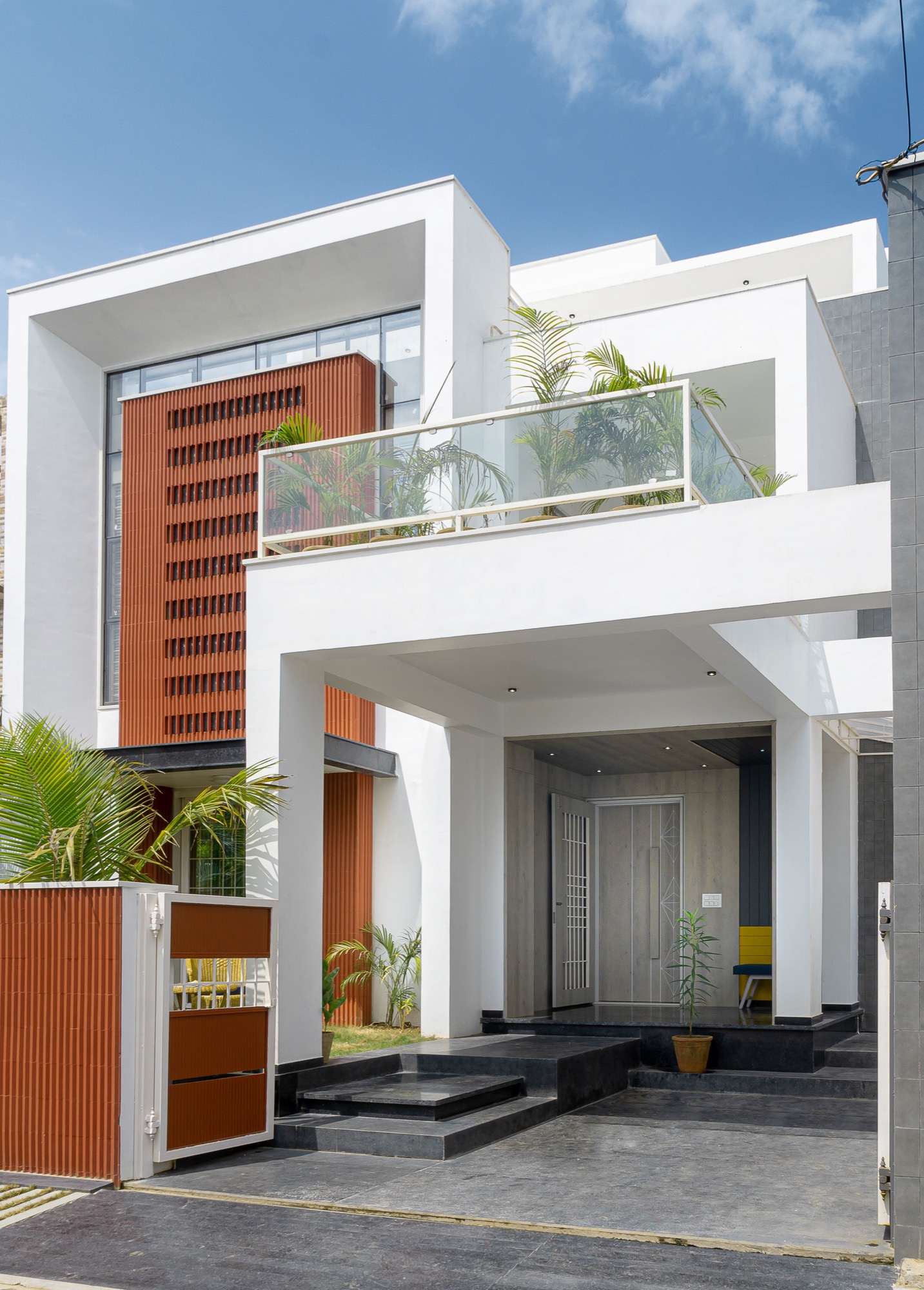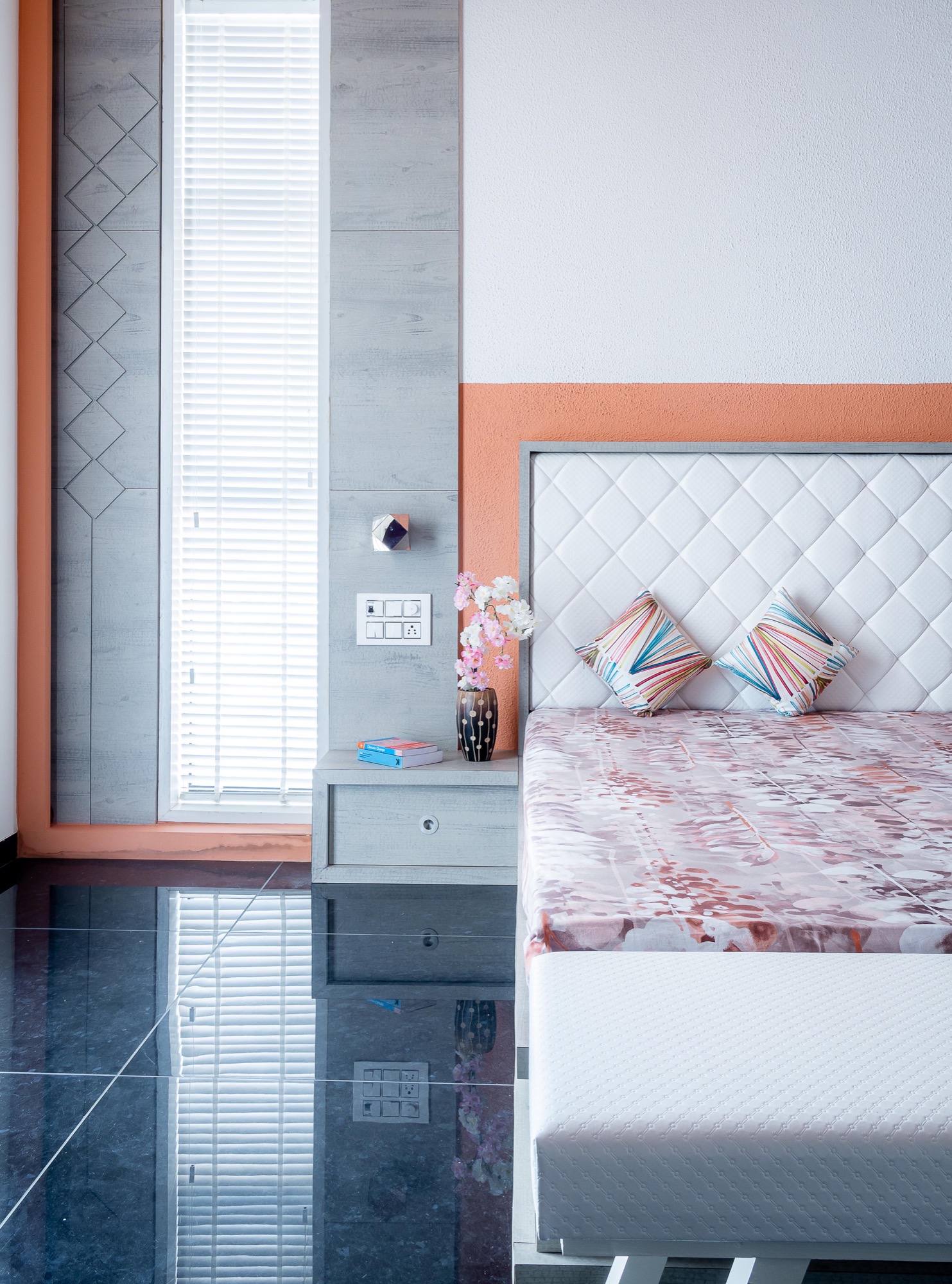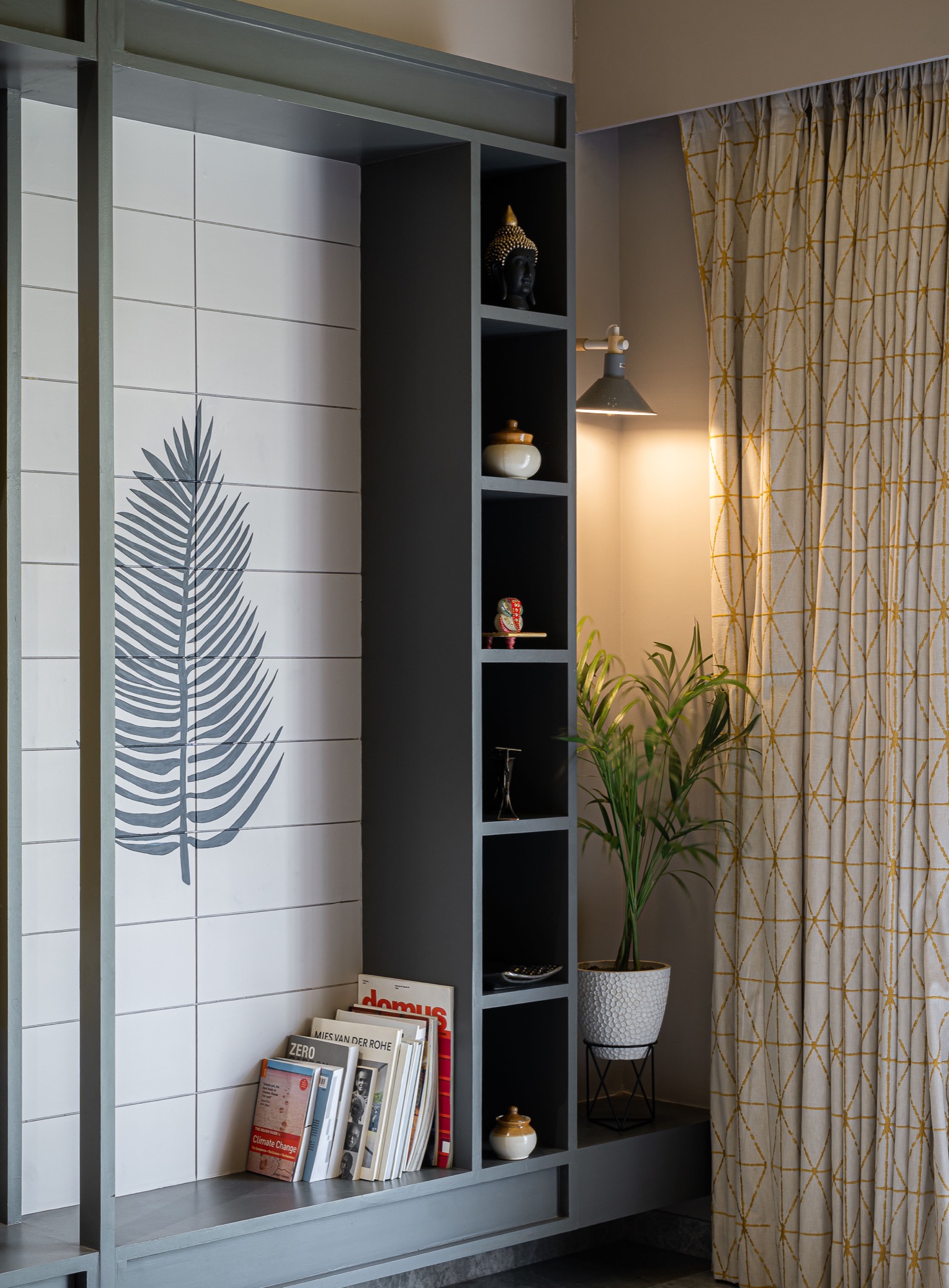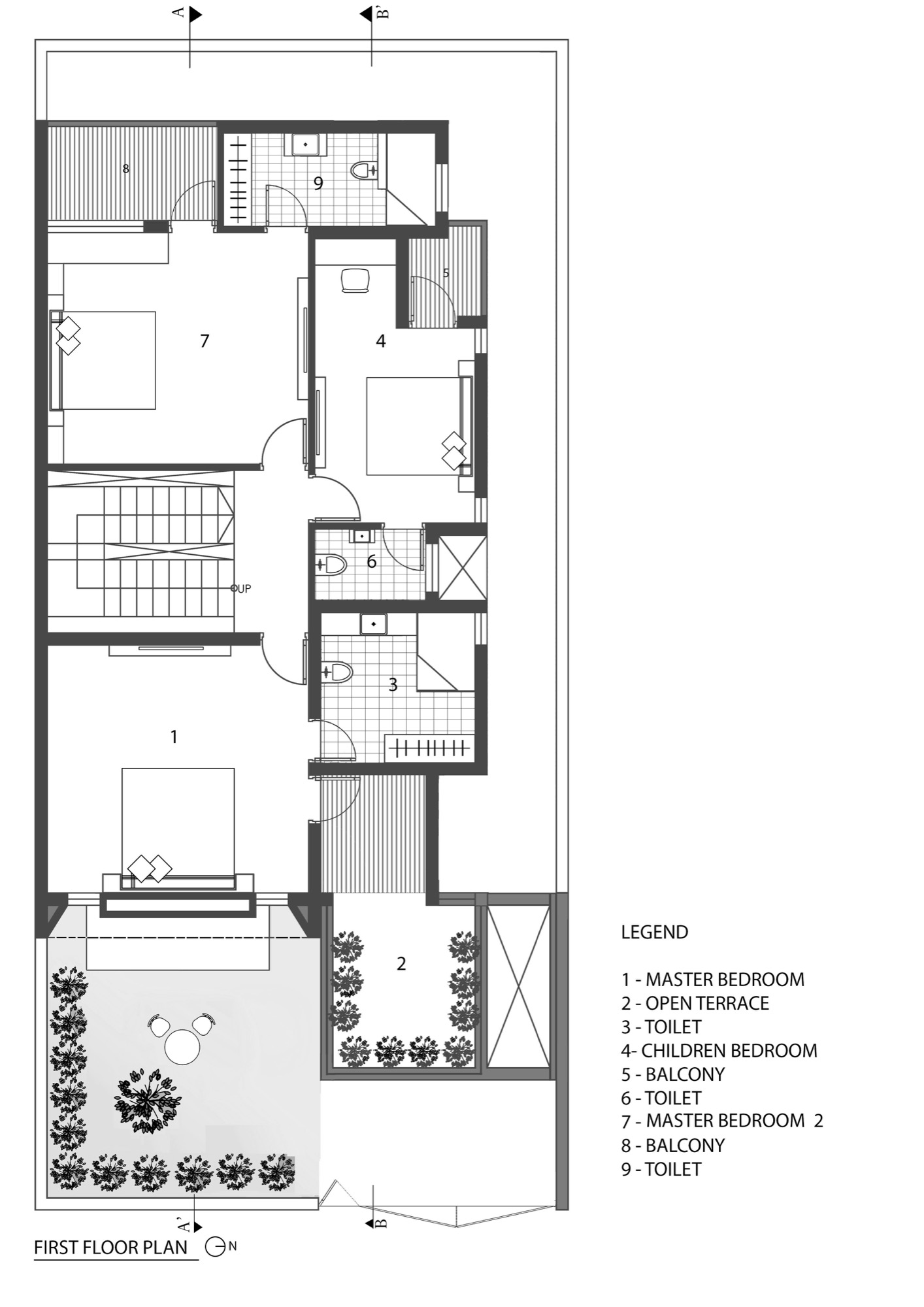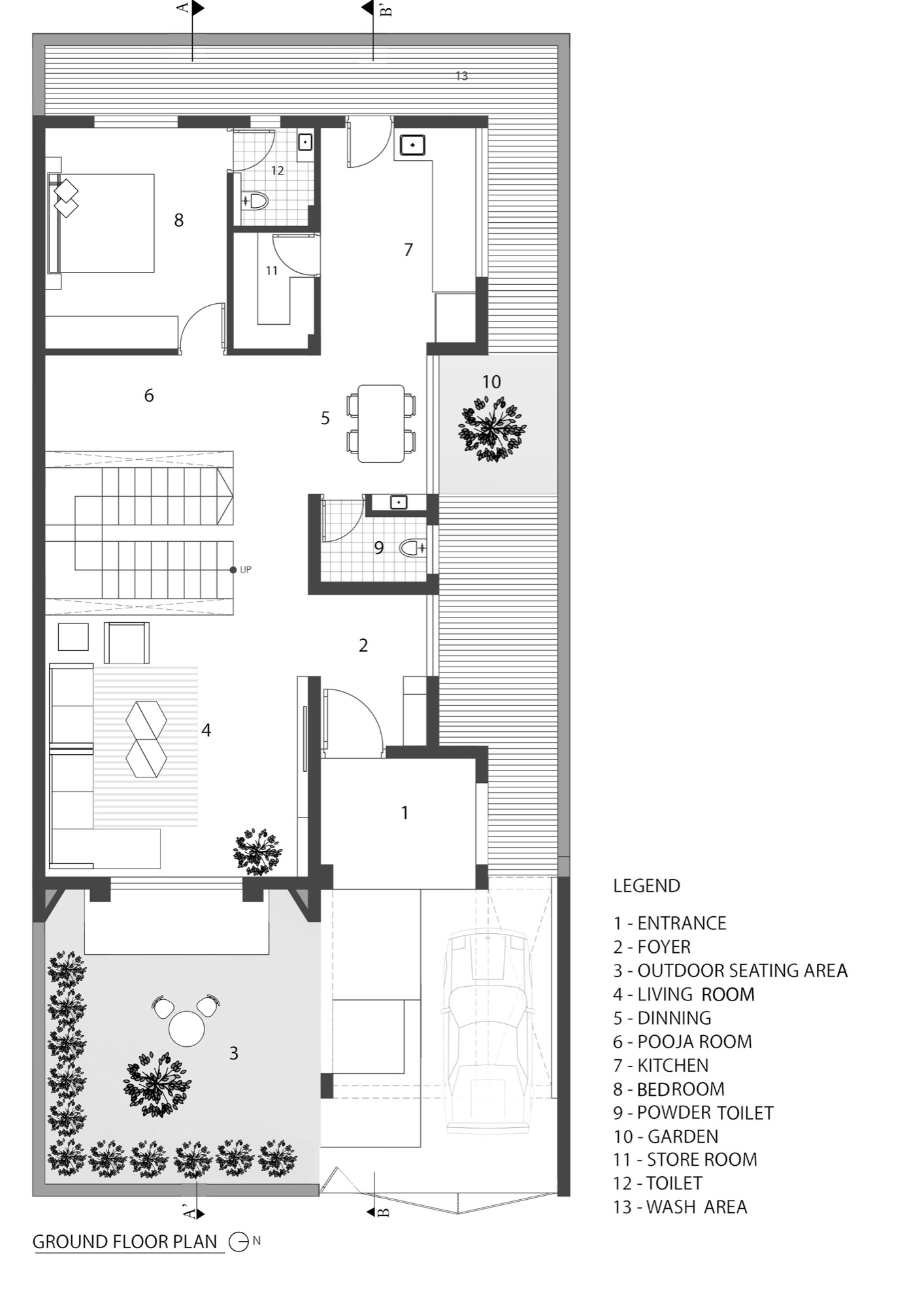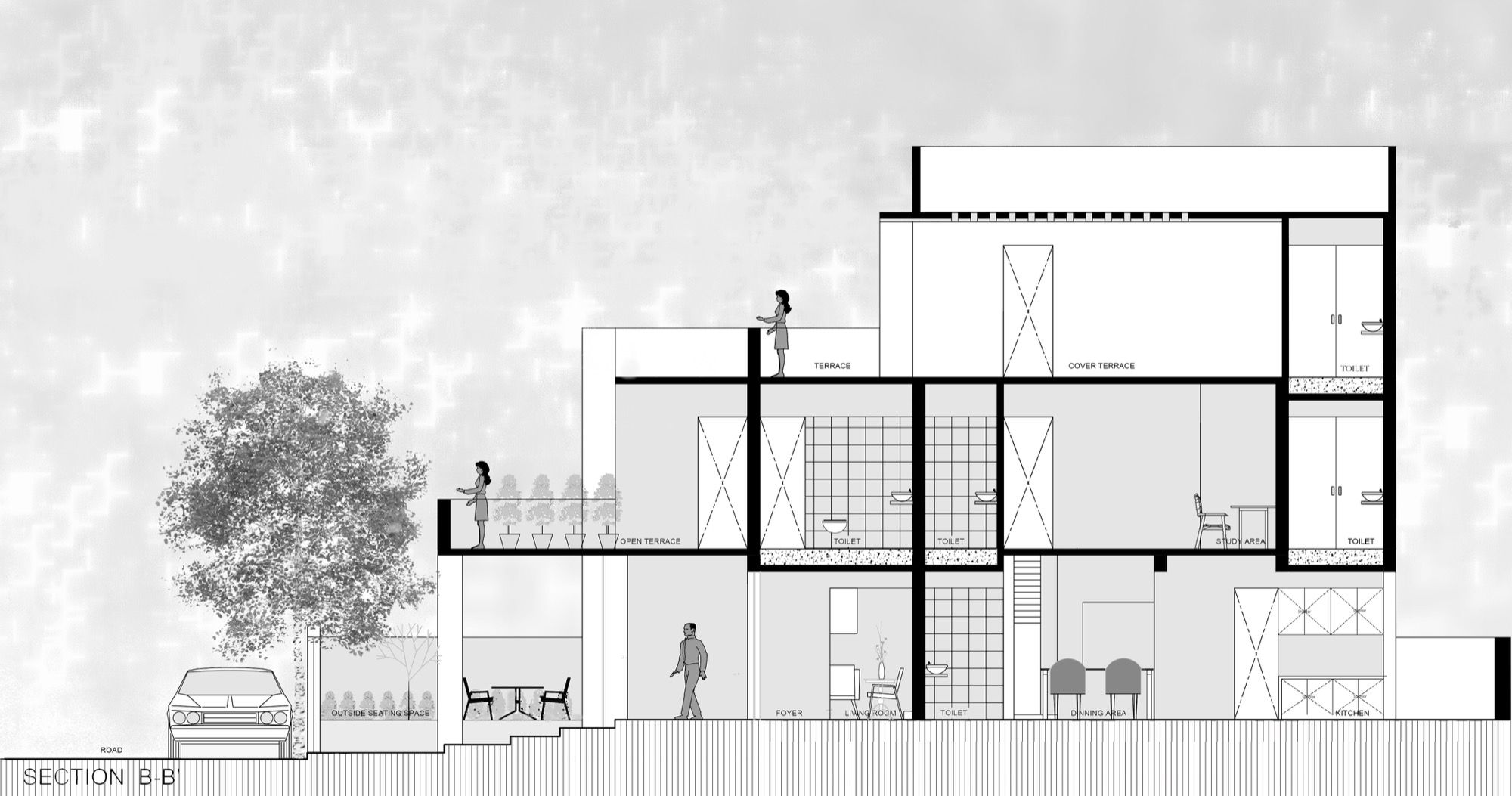
The client was specific about having minimum furniture in the interiors yet should dictate the modern aspects of the house. So the house caters to the artistic, colourful play of graphics with balancing and minimal furniture, define the warmth of the space. Each room, personalized furniture pieces, cantilevered staircase with the fusion of staircase railing, synthesis the overall outcome of the residence.
The decorative doorway and adjacent wall graphics give the foyer a modern theme based look. The beauty of exposed ceiling of the living room illustrates the use of lily gold colour finishes, with complimenting blue fabric furnishings, golden-yellow centre table and dark grey tv wall cabinet. Italian tile flooring gives a classic sense of luxury. The kitchen cabinets are simple, contrasting each other in lily gold colour with white textures. Also, the dinning area is set around the backdrop of the mural made from vernacular clay roof tiles wall garden, having the provision of plantations and lights and central vertical wash basin.
One of the master bedrooms on the upper floor represents a large, elegant ambience, achieved through the use of blue colour palette along with lightly textured laminates use for connecting wooden bed backdrop on both the walls in furniture. Another bedroom on the same floor represents one massive frame in pictorial graphics of pink colour palette in wooden bed backdrop, designed along with groove patterns emphasising the side elements through diffused lightings. From this, one can visualize the bold aesthetics touch added to the interiors with complete comfort.
The main living space with open sit out a garden and functional areas of the house include the kitchen, pooja space, master bedroom on the ground floor, while the upper floors have 2 master bedrooms, kid’s bedroom and a family gathering space on the top. Also, the elevated entrance steps give a secondary access to the sit-out garden on the ground floor as a connecting element.
The architect’s, screening strategy aims to research, discover and create new outcomes from vernacular material every time to stand boldly amongst the neighbourhood fabric. In current times, various costly and high energy consumption materials are used for cladding, which not only harms the environment but also disturbs the balance of ecology.
The design studio has explored another possibility for building screening by reusing of vernacular material, clay roof tiles for an Urban Dwelling in India to comfort its hot climate. The house features double-height volumes, where the east facade surfaces to clad clay roof tiles, depicting the play of earthy red textures with background glazing and white masses. The entire volume of the dwelling also replicates the pattern in the compound wall and entrance gate.
Here, the design studio took an initiative of finding an alternative, by reusing of the clay roof tiles in various pattern applications suitable for facade design in cooling the temperature according to the Indian context. The following concept also infuses the use of natural material in an eclectic style.
The double V-shaped clay tiles, used as a vernacular material, were transformed into an appealing element for the east-facing façade design. The clay tiles are centrally placed tilt at an angle in series, where the grid pattern casts a shadow on one another, by keeping the interior cool and reduction in temperature.
The pattern also displays an undulating aesthetics in straight arrangements of clay tiles due to its tilt installations. The layering of these clay tiles in a contemporary pattern is designed based on Indian temperature context throughout the day, where the background glazing transforms into a shaded element.
Thus the screening turns out to be an affordable and captivating formation, where the local craftsmen get the opportunity to generate more employment and increase their production.
Project Facts
Client: Mr Ripalbhai
Project type: Private House
Architect: Manoj Patel Design Studio
Office Website: www.manojpateldesignstudio.com
Contact Email: manojpatelstudio@gmail.com
Completion Year: August 2019
Built Area: 250 Sq. Mt.
Plot Area: 170 Sq. Mt.
Project Location : Vadodara, Gujarat, India.
Photographer: Darshan Dave

